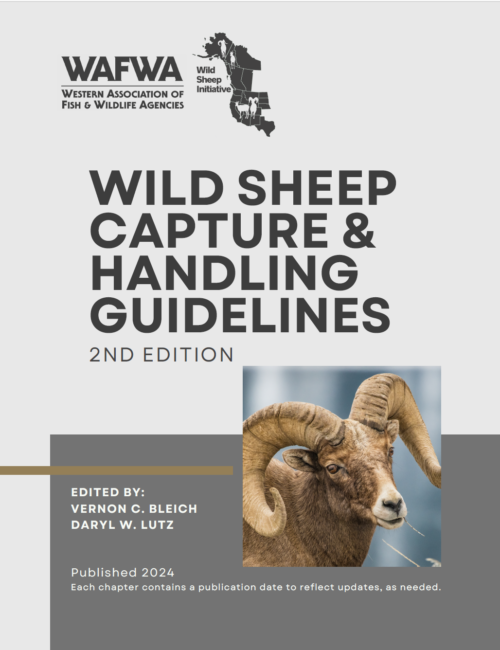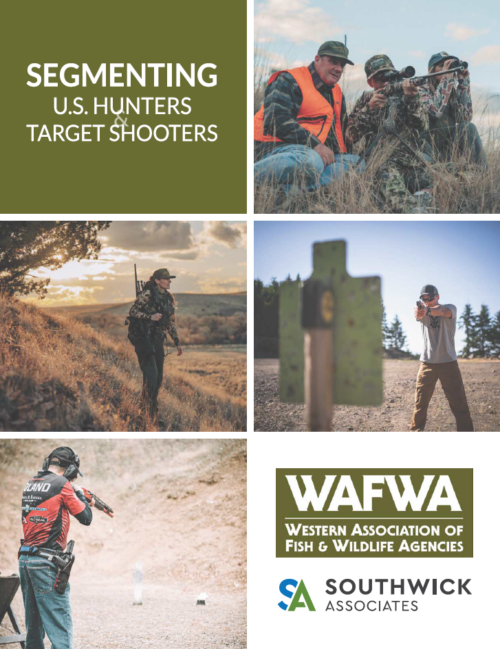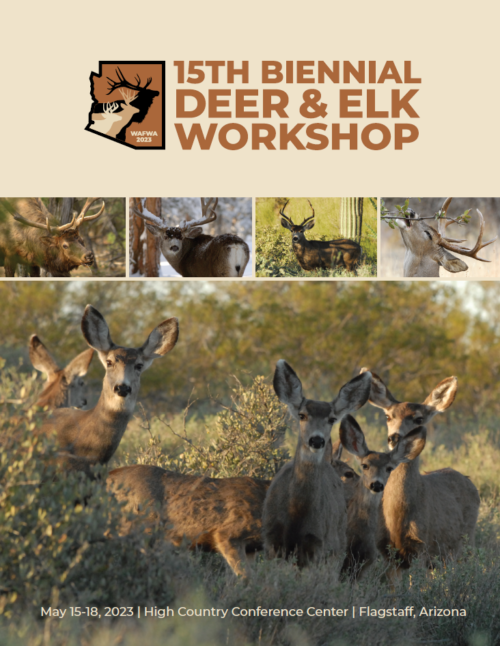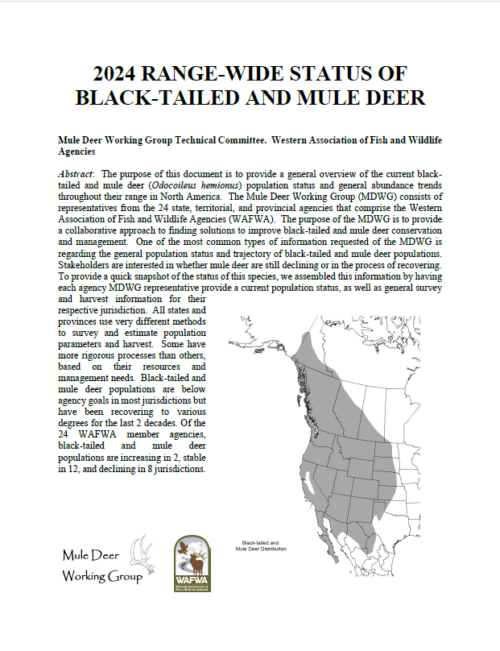Home
›
Wild Sheep Capture & Handling Guidelines, 2nd edition
Posted by WAFWA on July 2, 2024
Introduction and Pre-Capture Planning The capture of wildlife has its roots in providing nutrients for human consumption, whether through the domestication of wild animals or for more immediate use as a source of protein (Drew 2020). Over the millennia, methods of capturing wildlife have evolved in terms of their…
Read More
Public Motivations in Hunting and Target Shooting in the United States
Posted by WAFWA on June 27, 2024
Smart marketing recognizes people’s motivations to hunt and target shoot vary. To improve marketing efforts, this report presents the unique segments, or personas, describing U.S. hunters and target shooters. A survey was conducted in late 2023 of 2,076 hunters and 2,121 target shooters who participated at least once in the…
Read More
2024 RangeWide Status of Black-Tailed and Mule Deer
Posted by WAFWA on May 28, 2024
Mule Deer Working Group Technical Committee. Western Association of Fish and Wildlife Agencies Abstract: The purpose of this document is to provide a general overview of the current black-tailed and mule deer (Odocoileus hemionus) population status and general abundance trends throughout their range in North America. The Mule Deer Working…
Read More



